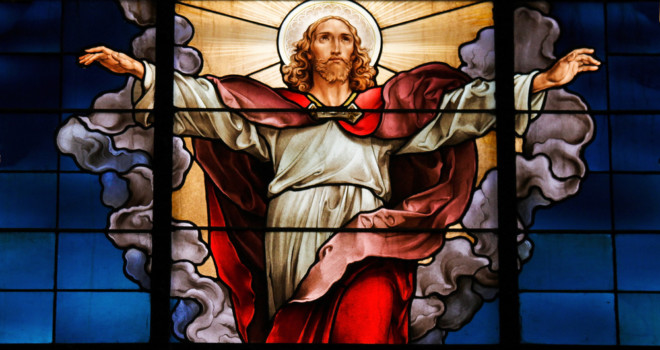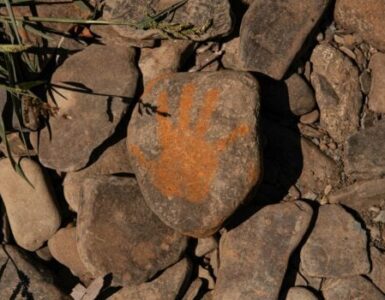“Then he led them out as far as Bethany, and lifting up his hands he blessed them.While he blessed them, he parted from them and was carried up into heaven.” (Luke 24:50-51)
For many who read the Gospels, Jesus’s ascension seems to be the completion of his ministry. They are sorely mistaken, though. At the ascension our Lord’s ministry reached new heights; he serves as humanity’s high priest before the Father in heaven. The Epistle to the Hebrews goes so far as to say that Christ “lives to make intercession” for us (Heb. 7:25). The very way that Jesus ascended into heaven speaks to this mystery.
Blessing was something familiar to every first century Jewish man and woman. Each day at 9 a.m. and 3 p.m., as commanded in the Law, the Jewish priests celebrated the tamid, or “perpetual offering” (Ex. 29:38-41). One group of priests placed a lamb, cake of bread, and wine on the altar as another group of priests led the people in reciting the Ten Commandments and the Shema, and then signing the psalm designated for that day of the week. The tamid concluded with the priests gathering on the steps of the Holy Place, extending their arms out toward the people and invoking the blessing the Lord entrusted to Moses and Aaron: “The LORD [YHWH] bless you and keep you; the LORD make his face shine upon you, and be gracious to you: the LORD lift up his countenance upon you, and give you peace” (Num. 6:24-26).
When the apostles and other disciples saw Jesus begin to ascend into heaven, in the very act of blessing them, they understood that he was “climbing the steps” of the true Holy Place. Only one Jewish priest was allowed to enter the Holy Place at the time of the tamid, to burn incense before God’s earthly throne room, the Holy of Holies. The only person who could enter that room was the high priest, and he did so only once a year on the Feast of Yom Kippur. When the apostles saw Jesus disappear into a “cloud,” an Old Testament symbol of God’s presence (Acts 1:9; Ex. 13:31-32, 24:16-18; Num. 9:15-23), they understood that Jesus had entered into God’s heavenly throne room, the reality to which the Temple and the earthly Holy of Holies pointed (Ex. 25:9, 40; Heb. 8:5).
The worship of the Old Covenant — the Temple and its many sacrifices — find their fulfillment in Christ’s priesthood: his death, resurrection, and ascension (Heb. 10:1-7). Jesus continues to offer himself to the Father, in his humanity, just as he has from all eternity in his divinity. Hebrews and the Book of Revelation show Jesus, the Lamb of God, making the true perpetual offering to the Father — himself, through the glorious wounds of his Passion (Heb. 7:25, 9:24; Rev. 5:6-14). Jesus draws all of heaven, the angels and saints, into this great heavenly liturgy, causing them to offer themselves through, with, and in him (Rev. 4:6-5:14).
This is the same liturgy that breaks through to earth, upon our altars, in the Eucharist. Through the sacrament of ordination, Christ presides in the person of his minister. As the fulfillment of Israel’s tamid, the bread and wine we offer are converted into the Lamb. We receive Christ himself in Eucharistic communion, the same Christ who bodily entered into the glory of the Father. Our lives are to be compenetrated by his and every part united to his sacrifice to the Father (1 Cor. 10:16-18; Rom. 12:1). And when our priests pronounce the blessing over us before sending us forth, it is Christ who blesses – the same Christ who blessed the apostles before sending them out to convert the world.
To fully receive that blessing, the Pentecostal grace Christ poured out upon the infant Church, we should dispose ourselves in the same way they did – faithful prayer and meditation upon Scripture, in the company of the Blessed Mother (Luke 24:49; Acts 1:14-15).
✠
image: jorisvo / Shutterstock.com
This article was adapted from Shane Kapler’s book, Through, With, and In Him: The Prayer Life of Jesus and How to Make It Our Own (Angelico Press, 2014).














